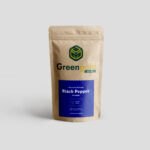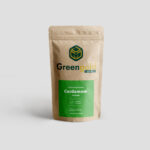The cardamom market is thriving, with increasing demand for this aromatic and valuable spice. However, for small farmers, competing with larger, industrial-scale farms can seem daunting. Despite these challenges, small-scale farmers have many advantages that can help them thrive in the cardamom market. With the right strategies, small farmers can tap into premium markets, boost profitability, and create sustainable farming systems that stand out in a competitive industry. 🌿
In this blog, we’ll explore practical tips and strategies that small cardamom farmers can adopt to stay competitive, from embracing organic farming to focusing on quality and brand storytelling. Let’s dive into how small farmers can carve their niche in the booming cardamom market. 🚜
🌱 1. Focus on Quality Over Quantity 🌿
In the cardamom industry, quality is paramount. Small farmers often have the advantage of being able to focus on the quality of their crops rather than sheer volume. By paying attention to every stage of cultivation, from soil health to harvest timing, small farmers can produce premium-quality cardamom that stands out in the market.
How to ensure high-quality cardamom:
- Organic farming practices: Growing cardamom organically, without the use of synthetic fertilizers and pesticides, can elevate the quality of the product and appeal to health-conscious consumers.
- Proper harvesting: Harvest cardamom pods at the peak of ripeness to ensure optimal flavor and aroma. Overripe or underripe pods can affect the spice’s overall quality.
- Processing and packaging: Clean and package cardamom in a way that preserves its natural oils and flavor. Using eco-friendly packaging can also attract customers who prioritize sustainability.
🌍 2. Tap into the Organic Market 🌱
The demand for organic cardamom is rapidly increasing worldwide. Organic products are highly valued for their health benefits, environmental sustainability, and superior quality. Small farmers can capitalize on this growing trend by transitioning to organic farming and obtaining certifications that make their products more attractive to consumers.
Steps to transition to organic farming:
- Research organic certification standards: Familiarize yourself with the standards required to obtain organic certification in your region or country.
- Avoid chemical pesticides and fertilizers: Instead, use natural pest control methods like neem oil or integrated pest management (IPM).
- Soil health management: Use techniques like crop rotation, composting, and cover cropping to maintain soil fertility and reduce dependency on synthetic inputs.
Benefits of going organic:
- Premium prices: Organic cardamom often commands higher prices in the market.
- Access to niche markets: Consumers who prioritize sustainability and health are willing to pay a premium for organic products.
💡 3. Leverage Direct-to-Consumer Sales 🛒
With the rise of online marketplaces and e-commerce platforms, small farmers now have the opportunity to sell their cardamom directly to consumers. This direct-to-consumer (DTC) model cuts out the middleman, allowing farmers to retain a larger share of the profits.
How to leverage DTC:
- Create an online store: Set up a website or use platforms like Etsy, Amazon, or specialized food marketplaces to sell your cardamom.
- Social media marketing: Use Instagram, Facebook, or Pinterest to showcase your cardamom, highlight the farm-to-table process, and connect with customers.
- Subscription services: Offer subscription boxes or monthly deliveries of freshly harvested cardamom to keep customers engaged and loyal.
🌱 4. Establish a Brand and Storytelling 📢
In today’s market, consumers are drawn to brands with stories. By sharing the unique story of your cardamom farm—whether it’s your commitment to sustainability, your local heritage, or your dedication to quality—you can create an emotional connection with your customers. Storytelling is a powerful tool for building a loyal customer base and distinguishing your brand from others.
How to craft your brand story:
- Share your journey: Talk about how you started your farm, the challenges you face, and what makes your cardamom special.
- Highlight sustainable practices: If you farm sustainably or use eco-friendly packaging, emphasize this in your messaging.
- Feature the farm workers: Show the people behind the product, and tell their stories, to create authenticity and a personal touch.
Benefits of brand storytelling:
- Builds customer loyalty: People are more likely to buy from brands they feel connected to.
- Differentiates from competitors: A strong, unique brand story sets you apart in a crowded market.
🌍 5. Collaborate with Cooperatives and Associations 🤝
Being part of a cooperative or industry association can give small farmers access to valuable resources, including market insights, bulk purchasing of supplies, and collective marketing efforts. Additionally, cooperatives can help small farmers reach larger markets and negotiate better prices for their crops.
Benefits of joining cooperatives:
- Group marketing efforts: Co-op marketing campaigns help increase visibility and sales for small-scale producers.
- Access to training: Many cooperatives offer training programs on sustainable farming practices, pest management, and crop yield optimization.
- Shared resources: Farmers can share equipment, tools, and other resources to reduce costs.
🌱 6. Focus on Niche Markets 🌍
Small farmers can find success by focusing on niche markets. For example, cardamom is used in a wide range of specialty products, such as infused teas, gourmet cooking spices, and luxury perfumes. By focusing on these specialized products, small farmers can charge a premium and appeal to consumers who value high-quality, artisanal goods.
Niche market ideas for small cardamom farmers:
- Gourmet cardamom products: Create cardamom-infused honey, spice blends, or cardamom coffee.
- Health-conscious products: Focus on cardamom’s health benefits, such as its digestive properties, and offer organic cardamom tea or detox blends.
- Artisanal perfumes and cosmetics: Leverage cardamom’s fragrant qualities by creating essential oils, soaps, or skin care products.
💡 7. Build Strong Relationships with Buyers 🌱
Building strong relationships with buyers can ensure steady sales and help small farmers navigate price fluctuations in the market. Whether you’re selling to local markets, wholesalers, or retailers, maintaining a personal connection can create trust and loyalty. You’ll also be able to negotiate better terms and ensure repeat business.
How to build lasting relationships with buyers:
- Provide consistent quality: Buyers will return if they know they can count on your product quality.
- Stay in touch: Keep buyers updated on your harvest, prices, and availability.
- Negotiate mutually beneficial deals: Aim for long-term partnerships rather than one-off transactions.
🌱 Conclusion: The Path to Success for Small Farmers 🌍
While competing in the cardamom market can seem challenging, small farmers have the potential to thrive by focusing on quality, embracing organic practices, leveraging direct-to-consumer sales, and building a strong brand. With the right strategy, small farmers can carve out a successful niche, tap into growing consumer demand for sustainable and premium products, and ensure long-term profitability.
At Greengold Guide, we believe in supporting small-scale farmers who are passionate about quality and sustainability. By implementing these strategies, small farmers can compete with the big players in the market and achieve success in the cardamom industry. 🌿












